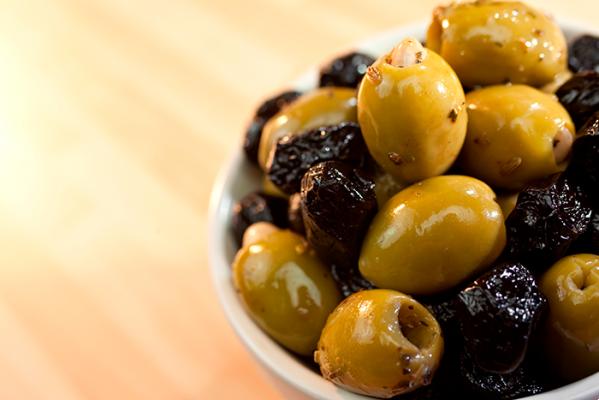
Too much salt in table olives
"Too much salt in table olives" is what was stated by the experts of the Action on Salt association at Queen Mary University of London. The organization has analyzed 555 snacks and appetizers among the most popular on the market discovering a dangerous salt content which in the case of some olives is even double the salt content in sea water.
"This research highlights the ease with which consumers take large amounts of salt without even knowing it," said Mhairi Brown, nutritionist for Action on Salt.
Excess salt is a real killer for our health: retains fluids in our body, increasing the workload for the heart and kidneys. According to the recommendations of the World Health Organization, adults and children after 7 years of age should consume no more than 5 grams of salt daily, only one teaspoon.
To avoid consuming too much salt and saturated fat, Action on Salt experts encourage all consumers to check product labels before buying them, and especially the salt content of olives, sausages, anchovies, dried tomatoes and feta cheese, and also consider the portions.
Understanding the differences and making the right choice
A first step to get an idea of what to choose is understand where the history of the single product starts from and which path it has traveled to reach our shopping bag.
There are substantial differences between oil and table olives: the chemical composition, the caliber and the oil content are just some of the characteristics.
In our country there are about 60 cultivars and around 80.000 tons of table olives are produced per year, 10% of which is destined for export.
Ma the el paeseni consume more than 120.000 tons per year. Here, then, we resort to imports from Greece, Spain and North Africa, especially Morocco.
The problem with importing is that many times this information is not mentioned on the label, which makes it difficult to make a complete "identikit" of the food. Considering that the olive is a whim, better then to move towards local or foreign productions of sure quality, choosing typical, certified, even organic products whose origin is known.
Where did he give it?
Nutritionally, green and black olives are quite similar, with one major difference in the amount of fat and protein. In particular, black olives are richer in protein (with a value of 1,6 gr / 100 gr) and contain a greater quantity of oleic acid (17,27 gr / 100 gr) and linoleic acid (2,65 gr / 100gr).
Finally, remember that black olives contain less fiber than green olives (2,4 gr against the 4,4 gr of green olives). So both can be added to your diet. Like all foods, the important thing is the quantity.


























